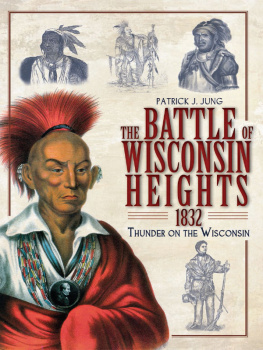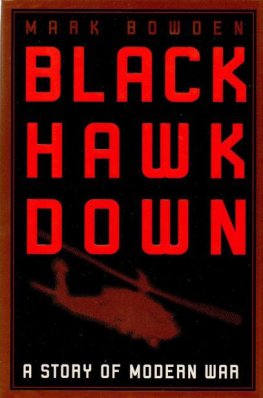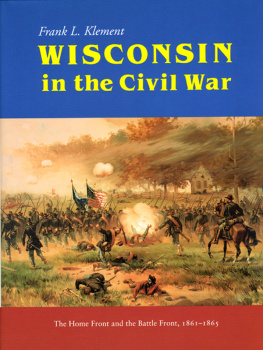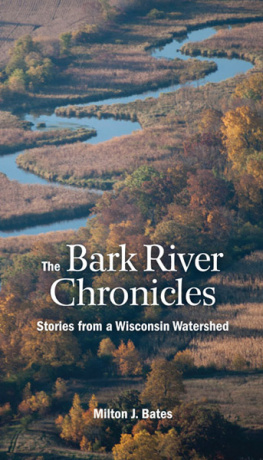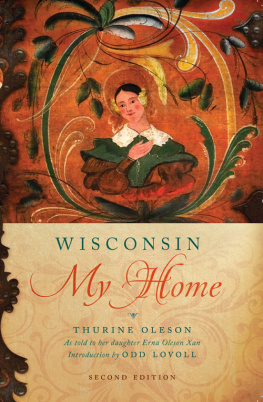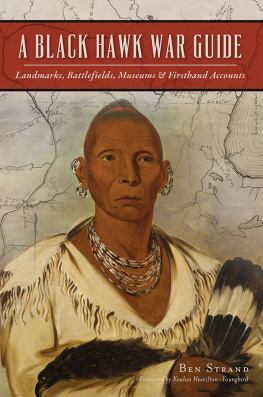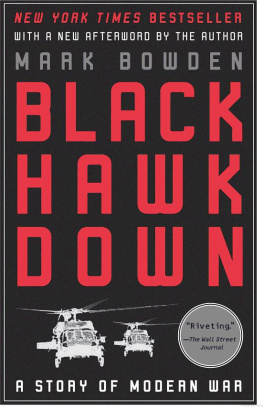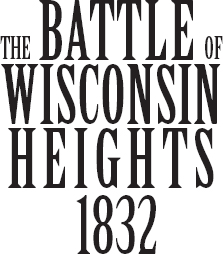

Published by The History Press
Charleston, SC 29403
www.historypress.net
Copyright 2011 by Patrick J. Jung
All rights reserved
Cover image: Portrait of Black Hawk by Charles Bird King (from Thomas L. McKenney and James Hall, The History of the Indian Tribes of North America, 18361844).
First published 2011
e-book edition 2013
Manufactured in the United States
ISBN 978.1.62584.199.5
Library of Congress Cataloging-in-Publication Data
Jung, Patrick J., 1963
The Battle of Wisconsin Heights, 1832 : thunder on the Wisconsin / Patrick J. Jung.
p. cm.
Includes bibliographical references.
print edition ISBN 978-1-60949-052-2
1. Wisconsin Heights, Battle of, Wis., 1832. 2. Black Hawk, Sauk chief, 1767-1838. I. Title.
E83.83.J85 2011
977.503--dc22
2010053830
Notice: The information in this book is true and complete to the best of our knowledge. It is offered without guarantee on the part of the author or The History Press. The author and The History Press disclaim all liability in connection with the use of this book.
All rights reserved. No part of this book may be reproduced or transmitted in any form whatsoever without prior written permission from the publisher except in the case of brief quotations embodied in critical articles and reviews.
To Katherine, Aloysius and Francis
Contents
Acknowledgements
I first learned about the Black Hawk War as a young boy, and ever since I have sought to learn as much as possible about this fascinating conflict. That interest prompted me to write a doctoral thesis, an earlier book and several articles on the Black Hawk War. I have also delivered public lectures and paper presentations on this topic at scholarly conferences.
Several persons and institutions deserve thanks for assisting me in this endeavor. First, I want to thank Father Francis Paul Prucha, SJ, and Dr. Alice Kehoe for kindling my scholarly interest in American Indian history and culture during graduate school and encouraging me to research this subject. My alma mater, Marquette University, provided generous grants and fellowships during my years of graduate study; much of the research that I did during that time went into this book. That research would not have been possible without the assistance of the staffs of various libraries and research institutions, particularly the United States National Archives, the Marquette University Library System, the Wisconsin Historical Society, the Milwaukee Public Library and the University of WisconsinMilwaukee Golda Meir Library. Most of all, I want to thank my parents, Robert and Georgia, for their constant encouragement and support, and my wife, Rochelle, for her many years of unconditional love. Finally, I want to thank my children, Katherine, Aloysius and Francis; this book is dedicated to them.
Introduction
The story of the Black Hawk War of 1832 is an oft-told saga in northern Illinois and southern Wisconsin, where it was fought. It is a story of chicanery, duplicity, savagery, heroism and even redemption. It was the last Indian war fought in this region, and when it was over, the United States took the land from the Indians (under the guise of legitimate purchase) and then sold it to white settlers who came to live on soil that once belonged to the Sauks and their confederates, the Foxes. The leader of this war, the great Sauk warrior Black Hawk, ended his days not on the lands he fought in vain to preserve for his people but in a new country farther west in present-day Iowa, where the federal government forced his tribe to move. During the brief war he led against the United States, he saw half of the people under his leadership killed in the savage massacres that characterized many of the wars battles. Indeed, for Black Hawk and his surviving followers, the war cast a black shroud over their collective memories of that time.
Yet this dismal outcome cannot obscure the superb military leadership that Black Hawk demonstrated during many phases of the war. His crowning glory occurred at a place called Wisconsin Heights, a precipice along the Wisconsin River with two distinct hilltops, one to the north and one to the south. Black Hawk chose the southern of the two prominences to make a stand along with a mere 120 warriors against an estimated 700 American militia volunteers. Given these numbers, Black Hawk knew he could not win; that was never his goal. His objective was to hold off the American forces long enough so that the remainder of his followerswomen, children and the elderlyhad enough time to cross the Wisconsin River and put this wide obstacle between them and the white volunteers. While greatly outnumbered and taking horrific casualties, Black Hawk achieved this difficult end. It was, without a doubt, the high point of his career as an Indian war leader.
It is this battle, the Battle of Wisconsin Heights, that is the focus of this book. Located near the cities of Sauk City and Prairie du Sac in south-central Wisconsin, the site of the battle is today preserved as a state park and historical site. One can still walk the ground that Black Hawks warriors and the volunteers trod as they engaged in combat on that fateful day of July 21, 1832. The hilltop where Black Hawk commanded his forces is a high, rocky prominence studded with gnarled pines. Standing atop this high point, it is easy to see why Black Hawk made his stand here. It affords an excellent view of the northern hilltop where the volunteers took their positions, as well as the Wisconsin River, below which Black Hawks people made a desperate retreat across the waters. Anyone walking on these hills today can almost hear the thunder of the muskets, the cries of the wounded and the soft whispers of the dead.
This book presents an accurate and detailed account of this tremendous battle. For residents of south-central Wisconsin, this volume has a special significance because the Battle of Wisconsin Heights is woven into the fabric of the regions history. Indeed, Sauk City and Prairie du Sac take their names from the Indian people known as the Sauks who lived in the immediate region about one hundred years before the battle and who, under Black Hawk, fought, bled and died at the Battle of Wisconsin Heights. For readers interested in the military history of the Black Hawk War, this book provides a narrative of the one true, large-scale battle of the conflict. The othersStillmans Run, the Battle of Pecatonica, the Battle of Bad Axe, etc.were small raids and skirmishes, unorganized retreats or outright massacres. Only at the Battle of Wisconsin Heights did both sides employ the classic stratagems of fire and maneuver using relatively large bodies of men.
Before the story of this battle can be told, it is necessary to look at the early history of the Sauks, their confederates the Foxes and other tribes such as the Kickapoos, Potawatomis, Winnebagos (also known as the Ho-Chunks) and Menominees who found themselves, often unwillingly, tangled in the web of events that led to the Black Hawk War. It is also critical to examine the events that transpired in the wake of the Battle of Wisconsin Heights, particularly the sad and disturbing story of Black Hawks people, who, in the weeks afterward, suffered starvation and bloody massacres at the hands of the United States military forces. Still, the Battle of Wisconsin Heights stands as the focal point of this narrative, for despite all of its bloodiness, tragedy and horror, the battle provides a story that also includes heroism, drama and courage.
Next page
